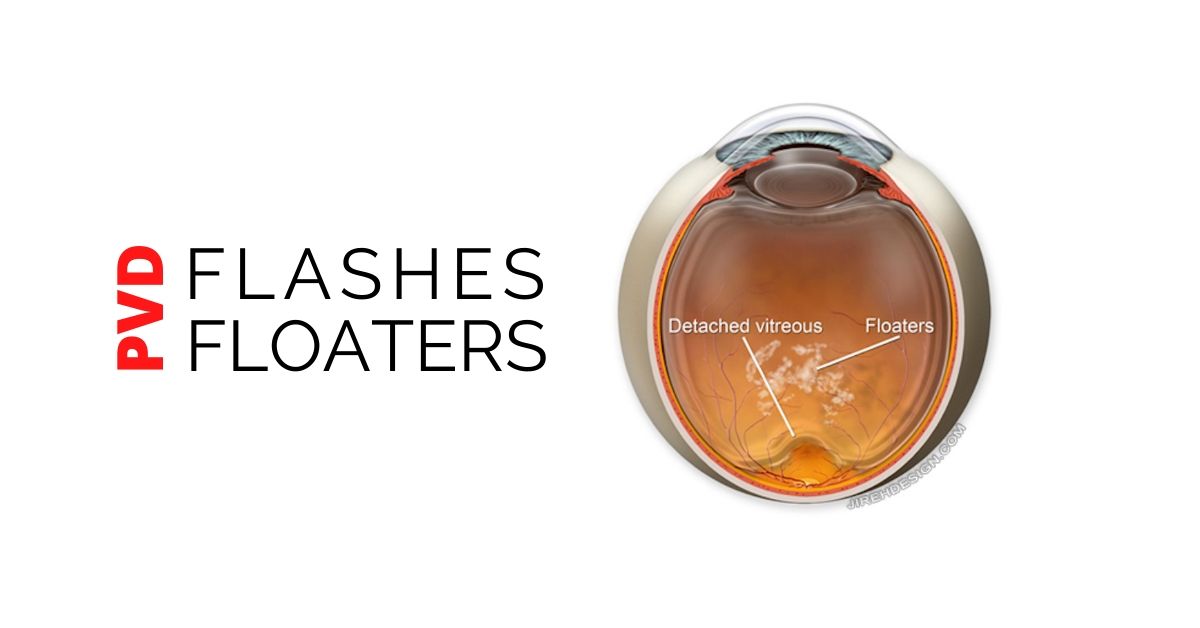PVD stands for “posterior vitreous detachment.” It’s a normal event that increases your risk for developing a retinal tear which can lead to a retinal detachment. Everyone will eventually get a PVD.
New flashes and new floaters should be reported to your eye doctor or retina specialist. Not all floaters are benign. Only a full dilated exam will determine if your new symptoms are related to a posterior vitreous detachment, retinal tear or something else.
Symptoms of Posterior Vitreous Detachment
The most common symptoms of a PVD:
- Flashes
- Floaters
- Nothing (Asymptomatic, no flashes or floaters)
There are two ways to stimulate the retina: normal light and physical manipulation. Usually, light enters the eye and is captured by the rods and cones of the retina which eventually produce vision. The other mechanism occurs when you rub your eyes so hard you actually see patterns in your vision. This rubbing, or physical manipulation, also produces “light.”
After a PVD has occurred, only the back, or posterior portion, of the vitreous separates from the retina. The anterior portion remains fixed to the surface of the retina. As the newly separated vitreous cleaves from the retinal surface in the back, it can move to and fro in the eye. This transmits energy to the portion of the vitreous still attached to the retina in the anterior part of the eye…causing flashes.
What are Floaters?
Floaters can be a result of cellular debris from underneath the retina in cases of a retinal tear, blood or just opacities which have formed in the otherwise clear vitreous gel.
Not all posterior vitreous detachments cause flashes or floaters. Thus, follow up is always recommended so your retina specialist can look for asymptomatic retinal tears.
What if I have a Retinal Tear?
First of all new flashes and floaters should be reported to your eye doctor. In the case of a PVD, it’s important to look for a retinal tear. A retinal tear is most likely to occur during the first 6 weeks after a PVD has occurred.
The goal of examination is to find a retinal tear before it turns into a retinal detachment. Retinal tears can usually be treated with laser whereas a retinal detachment requires surgery and there is a chance of lost vision.
If you would like to schedule an appointment, please call us (877) 245.2020.
